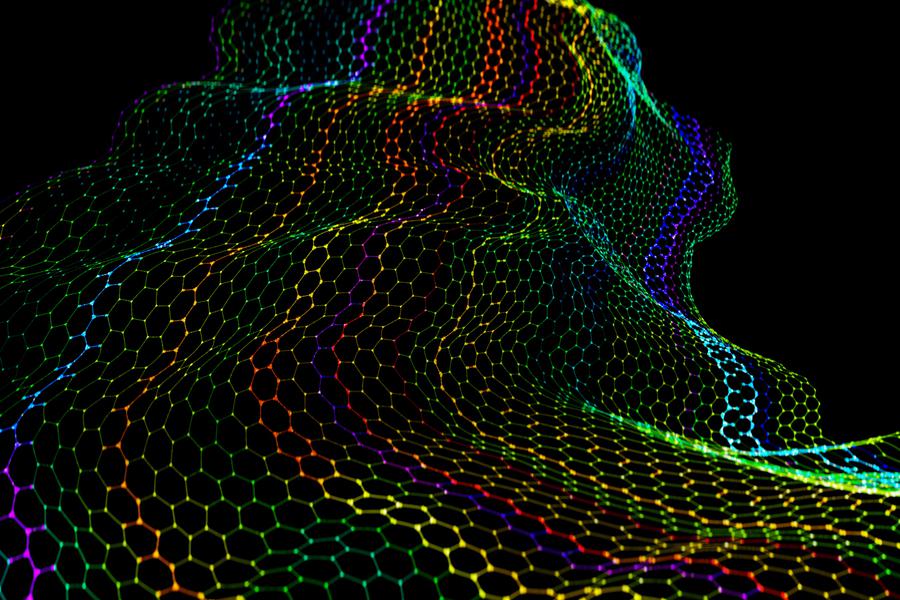Jennifer Chu | MIT News Office

Under certain conditions — usually exceedingly cold ones — some materials shift their structure to unlock new, superconducting behavior. This structural shift is known as a “nematic transition,” and physicists suspect that it offers a new way to drive materials into a superconducting state where electrons can flow entirely friction-free.
But what exactly drives this transition in the first place? The answer could help scientists improve existing superconductors and discover new ones.
Now, MIT physicists have identified the key to how one class of superconductors undergoes a nematic transition, and it’s in surprising contrast to what many scientists had assumed.
The physicists made their discovery studying iron selenide (FeSe), a two-dimensional material that is the highest-temperature iron-based superconductor. The material is known to switch to a superconducting state at temperatures as high as 70 kelvins (close to -300 degrees Fahrenheit). Though still ultracold, this transition temperature is higher than that of most superconducting materials.
The higher the temperature at which a material can exhibit superconductivity, the more promising it can be for use in the real world, such as for realizing powerful electromagnets for more precise and lightweight MRI machines or high-speed, magnetically levitating trains.
For those and other possibilities, scientists will first need to understand what drives a nematic switch in high-temperature superconductors like iron selenide. In other iron-based superconducting materials, scientists have observed that this switch occurs when individual atoms suddenly shift their magnetic spin toward one coordinated, preferred magnetic direction.
But the MIT team found that iron selenide shifts through an entirely new mechanism. Rather than undergoing a coordinated shift in spins, atoms in iron selenide undergo a collective shift in their orbital energy. It’s a fine distinction, but one that opens a new door to discovering unconventional superconductors.
“Our study reshuffles things a bit when it comes to the consensus that was created about what drives nematicity,” says Riccardo Comin, the Class of 1947 Career Development Associate Professor of Physics at MIT. “There are many pathways to get to unconventional superconductivity. This offers an additional avenue to realize superconducting states.”
Comin and his colleagues have published their results today in a study appearing in Nature Materials. Co-authors at MIT include Connor Occhialini, Shua Sanchez, and Qian Song, along with Gilberto Fabbris, Yongseong Choi, Jong-Woo Kim, and Philip Ryan at Argonne National Laboratory.
Following the thread
The word “nematicity” stems from the Greek word “nema,”meaning “thread” — for instance, to describe the thread-like body of the nematode worm. Nematicity is also used to describe conceptual threads, such as coordinated physical phenomena. For instance, in the study of liquid crystals, nematic behavior can be observed when molecules assemble in coordinated lines.
In recent years, physicists have used nematicity to describe a coordinated shift that drives a material into a superconducting state. Strong interactions between electrons cause the material as a whole to stretch infinitesimally, like microscopic taffy, in one particular direction that allows electrons to flow freely in that direction. The big question has been what kind of interaction causes the stretching. In some iron-based materials, this stretching seems to be driven by atoms that spontaneously shift their magnetic spins to point in the same direction. Scientists have therefore assumed that most iron-based superconductors make the same, spin-driven transition.
But iron selenide seems to buck this trend. The material, which happens to transition into a superconducting state at the highest temperature of any iron-based material, also seems to lack any coordinated magnetic behavior.
“Iron selenide has the least clear story of all these materials,” says Sanchez, who is an MIT postdoc and NSF MPS-Ascend Fellow. “In this case, there’s no magnetic order. So, understanding the origin of nematicity requires looking very carefully at how the electrons arrange themselves around the iron atoms, and what happens as those atoms stretch apart.”
A super continuum
In their new study, the researchers worked with ultrathin, millimeter-long samples of iron selenide, which they glued to a thin strip of titanium. They mimicked the structural stretching that occurs during a nematic transition by physically stretching the titanium strip, which in turn stretched the iron selenide samples. As they stretched the samples by a fraction of a micron at a time, they looked for any properties that shifted in a coordinated fashion.
Using ultrabright X-rays, the team tracked how the atoms in each sample were moving, as well as how each atom’s electrons were behaving. After a certain point, they observed a definite, coordinated shift in the atoms’ orbitals. Atomic orbitals are essentially energy levels that an atom’s electrons can occupy. In iron selenide, electrons can occupy one of two orbital states around an iron atom. Normally, the choice of which state to occupy is random. But the team found that as they stretched the iron selenide, its electrons began to overwhelmingly prefer one orbital state over the other. This signaled a clear, coordinated shift, along with a new mechanism of nematicity, and superconductivity.
“What we’ve shown is that there are different underlying physics when it comes to spin versus orbital nematicity, and there’s going to be a continuum of materials that go between the two,” says Occhialini, an MIT graduate student. “Understanding where you are on that landscape will be important in looking for new superconductors.”
This research was supported by the Department of Energy, the Air Force Office of Scientific Research, and the National Science Foundation.
Reprinted with permission of MIT News (http://news.mit.edu/)











